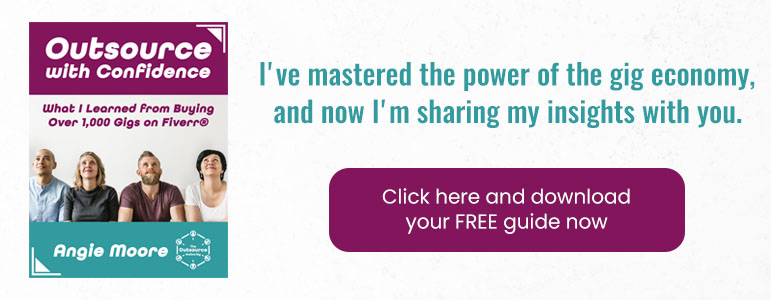Ever felt like you need a translator to understand web development jargon when discussing your project with a freelance developer? It’s like needing a degree in a new language just to follow along. Fear not, because our checklist is the Rosetta Stone you’ve been searching for. Designed to decode the complex language of web development, this guide ensures you’re fully equipped to communicate effectively, making every conversation with your developer a breeze. Ready to master the lingo and streamline your project? Let’s reveal how this checklist can be your shortcut to becoming fluent in web development speak.
Ever chased a web development goal that felt as elusive as a mirage? Without clear objectives, embarking on this journey can feel like you’re adrift at sea, hoping for a favorable wind but ending up off course. Establishing clear goals with your freelance web developer isn’t just a step; it’s the bedrock of your project. Here’s the scoop on why having a crystal-clear vision is non-negotiable:
- Targets to Aim For: Think of clearly defined goals as your North Star, guiding you and your developer to success with precision. It turns the game from a blindfolded dart throw into a targeted strike.
- Efficiency and Effectiveness: With your destination in sight, every task becomes a step on a map to treasure. This not only saves precious time but ensures every effort propels you closer to your vision.
- Measuring Success: Without milestones, how do you know you’re on the right path? Clear objectives provide these checkpoints, offering chances to adjust the sails as needed.
Aiming for clarity in your objectives doesn’t just smooth out the journey—it ensures you’re not just building ‘a’ website but ‘your’ digital masterpiece. Ready to chart a course for success in web development? Let’s navigate these waters together, equipped with the right compass—your goals.
Imagine you’re at a drive-thru, placing an order. The person on the other end repeats it back to ensure everything’s just right. That’s exactly how communication should work when you’re collaborating with a freelance web developer. It’s not just about exchanging emails or messages; it’s about ensuring both sides truly understand each other, leaving no room for “I thought you meant…” moments.
In the digital project arena, clear, detailed communication is your best friend. Here’s why and how:
- Echo Back: Just like at the drive-thru, repeating back what you’ve discussed can clarify expectations and confirm understanding. It’s a simple, yet effective way to ensure both parties are aligned.
- Bridge the Language Gap: Working with someone who doesn’t share your first language? Lean on visuals, shared documents, and straightforward language. Tools like screenshots, diagrams, and shared online whiteboards can transcend language barriers.
- Detail-Oriented Briefs: When it comes to project details, think “the more, the merrier.” Ambiguity is the enemy. Providing comprehensive briefs and feedback ensures your developer knows exactly what you’re aiming for.
- Invite Questions: A culture of curiosity can prevent many a misstep. Encourage your developer to ask questions if anything is unclear. This not only fosters a better understanding but also builds a stronger rapport between you two.
With these strategies in play, you’re not just communicating; you’re building a foundation of mutual understanding and respect, paving the way for a successful project outcome.
Launching a website without addressing the technical essentials is akin to having a sports car that only starts when it feels like it—both flashy and unreliable. Let’s supercharge through these non-negotiables:
- Speed Is the Pulse of Your Site: Imagine your website as the star athlete in the digital realm, where speed isn’t just a luxury; it’s the heartbeat of user experience. A fast-loading site is like a sprinter breaking the tape; it keeps the audience cheering (and clicking) for more, significantly lifting your SEO game and ensuring user satisfaction hits the podium every time.
- Responsive Design Is Non-Negotiable: In today’s digital age, your site needs the agility of a world-class gymnast, able to twist and turn to fit any screen it encounters. This level of responsiveness guarantees that whether your audience is on a desktop behemoth or the sleekest smartphone, their experience remains top-tier, ensuring no one misses out on the action.
- SEO: The Beacon for Visibility: Crafting your site with SEO in mind is like setting up a series of lighthouses across the vast internet. These beacons ensure your site isn’t just another drop in the digital ocean but a destination point for traffic. Incorporating keyword optimization, meta descriptions, and alt text for images not only enhances visibility but also directs a spotlight on your digital presence.
- Meticulous Quality Assurance: Skipping on thorough testing before launch is tantamount to a trapeze artist performing without a net—daring but unnecessarily risky. It’s crucial to scrutinize each element, from links to images to forms, ensuring they function flawlessly. This diligence is your dress rehearsal, making sure the show goes off without a hitch, especially for e-commerce sites where the transaction process should be as smooth as a magician’s sleight of hand.
- Accessibility Matters: Embracing accessibility isn’t just about compliance; it’s about opening your digital arms wide, inviting the entire world into your space. It’s acknowledging that the web is for everyone and acting to make your site a welcoming place for people with disabilities. This commitment not only broadens your reach but enriches the web ecosystem as a whole.
By diligently crafting these technical foundations, you’re not just launching any website; you’re premiering a digital opus, ready to dazzle and dominate the online landscape.
Choosing the right Content Management System (CMS) is akin to finding an assistant for your digital realm who doesn’t need a coffee break. The ideal CMS empowers you to publish, edit, and manage content as smoothly as sliding into your favorite pair of slippers. Here’s the lowdown on what makes a CMS your best ally, rather than a puzzle that’s harder to solve than assembling furniture without instructions:
- User-Friendly Interface: It should be as intuitive as a well-designed game app, letting you add or tweak content without pulling your hair out.
- Customization and Flexibility: Offers a buffet of templates and customization options, ensuring your site fits your brand like a glove and grows with your business ambitions.
- SEO Tools: Equipped with built-in SEO magic wands to help your content climb the search engine ranks without breaking a sweat.
- Mobile Optimization: Because your audience is on the move, your CMS ensures your site looks sharp on any device, from smartphones to tablets.
- Content Formatting Features: With tools for adding flair to your content, like headers and bullet points, making it snackable for both the avid readers and the skimmers.
- Spell Check and Grammar: It’s like having a vigilant grammar guru by your side, ensuring your content is polished to perfection before hitting the spotlight.
Armed with these features, your CMS isn’t just a tool; it’s the secret sauce to making your website not only visually stunning but a functional powerhouse of engagement and usability.
Think of the review and feedback loop as dining at a fancy restaurant rather than a fast-food joint. When your dish arrives, and it’s not quite what you expected, saying ‘It’s fine’ while staring at a fly in your soup doesn’t help the chef improve. Here’s how to turn feedback into a Michelin-star experience:
- Be Specific with Your Feedback: Clearly articulate what needs tweaking, as if you’re explaining why you prefer your steak medium-rare instead of well-done. This clarity turns ‘It’s fine’ into actionable insights.
- Expect Revisions: Just like sending a dish back to the kitchen, expect a few rounds before it’s perfect. Embrace the process of refinement—it’s where good becomes great.
- Patience and Respect: Offering feedback with the grace of a seasoned food critic fosters a positive atmosphere for changes. Remember, constructive feedback is the secret sauce to culinary—and digital—masterpieces.
- Seek External Insights: Sometimes, a second opinion can catch what you missed, much like a dining companion pointing out that the wine doesn’t pair well with your meal.
- Use a Checklist: Equip yourself with a review checklist as comprehensive as a sommelier’s wine list, ensuring no detail is overlooked.
- Focus on Your Audience: Ultimately, the website, like a carefully curated menu, is for your audience. Ensure their tastes and preferences are the priority.
By embracing these practices, you’re not just revising; you’re collaboratively crafting a website that’s as delightful and satisfying as a gourmet meal, guaranteed to leave your audience coming back for seconds.
Launching your website and ensuring its smooth operation post-launch are crucial steps. Here are the steps for this phase:
- Pre-Launch Checklist: Confirm that all elements of the site, from functionality to content, are polished and ready. This includes a final run-through of the review and feedback loop.
- Soft Launch: Consider a soft launch to a limited audience to gather initial feedback and make adjustments before the full public debut.
- Announce Your Launch: Use your channels, such as social media and email lists, to create buzz around your launch.
- Monitor and Optimize: After launch, keep a close eye on site performance, user feedback, and analytics. Use this data to further optimize the user experience.
- Post-Launch Support: Ensure you have a plan for ongoing site maintenance and updates. This keeps your site relevant and functioning optimally.
By following these steps, you’re not just launching a website; you’re setting the stage for its long-term success.
Consider this checklist less as a to-do list and more as a treasure map, guiding you through the wilds of web development. We’ve charted the course from setting clear goals to perfecting communication, mastering the technical juggernauts, and refining through a robust review loop. Embarking on this adventure with our map in hand means not just navigating but mastering the complex seas of web development. This isn’t just about making a website—it’s about crafting a digital landmark that’s impossible to ignore. Your project is poised not just to sail, but to soar.
Looking to kick off your web project on the right foot? The key is finding the perfect freelance web developer for your unique needs. If the thought of sifting through countless options seems daunting, we’ve got just the thing. Download our free guide, ‘Outsource with Confidence: What I Learned from Buying 1,000 Gigs on Fiverr,’ and start your journey equipped with the knowledge to find that ideal match. Don’t leave your project to chance; let our guide lead the way to a successful partnership










